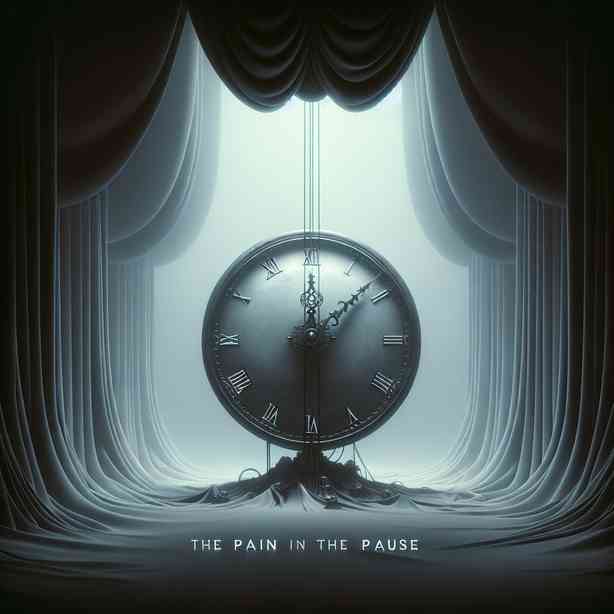
The Pain in the Pause
In today’s fast-paced world, where every moment seems to be filled with activity and noise, we often overlook the significance of pauses in our lives. As we strive to achieve more and succeed in various aspects of our lives, the act of pausing can elicit feelings of discomfort or anxiety. This sense of unease is what we may refer to as “the pain in the pause.” Exploring the reasons behind this phenomenon can help us understand not just our feelings towards pauses but also how to navigate them effectively.
To begin with, let’s define what we mean by a “pause.” A pause can be anything from a moment of silence in conversation to a break in our daily routines. It can be a few seconds of stillness while we reflect on our thoughts, or it can be a longer duration where we step back from our responsibilities. In essence, pauses are moments where we allow ourselves to rest, reflect, and recharge. However, these moments can be laden with discomfort, as they often force us to confront our thoughts and emotions—something many of us tend to avoid.
One of the primary reasons the pause can be painful is due to the societal pressure we face to be constantly productive. In a culture that emphasizes hustle and achieve, taking a break can sometimes feel like a failure or a weakness. This fear of inadequacy can lead us to fill our schedules with endless tasks and responsibilities, leaving little room for moments of reflection or rest. The pain in the pause, then, arises from the internal struggle between our desire to be productive and the need for self-care.
Additionally, pauses can bring to the surface emotions we’ve been suppressing. For many, staying busy is a way to avoid facing uncomfortable feelings—whether it’s anxiety, sadness, or even joy. When we actually take a moment to pause, we may find ourselves grappling with emotions that we’ve pushed aside in our busy lives. This emotional confrontation can be jarring, leading to the discomfort associated with pauses. Understanding this can help us to embrace the pause as an opportunity for emotional growth rather than a source of anxiety.
Moreover, the fear of the unknown can play a significant role in our relationship with pauses. In moments of silence, thoughts may race through our minds, often filled with worries and doubts about the future. This fear of the unknown can create a resistance to pausing. However, it is important to recognize that the uncertainty that comes with a pause can also lead to creativity and discovery. In fact, some of the most innovative ideas have emerged during periods of reflection and quiet. Embracing the unknown and allowing ourselves to sit with it can transform the way we view pauses in our lives.
Another aspect to consider is the impact of technology on our relationship with pauses. In an age where smartphones and social media keep us constantly connected, the notion of pausing seems even more foreign. Notifications and updates continuously pull our attention away from the present moment, making it difficult to appreciate the value of stillness. This constant barrage of information can exacerbate feelings of anxiety and stress. Recognizing the impact of technology on our need for pauses is crucial. It is essential to set boundaries around technology use to reclaim those moments of quiet and introspection without distractions.
To address the pain in the pause, it is helpful to adopt practices that encourage mindfulness and self-compassion. Mindfulness is the practice of being present in the moment and fully experiencing our thoughts and emotions without judgment. By incorporating mindfulness into our lives, we can learn to navigate the discomfort that arises during pauses. Techniques such as meditation, deep breathing exercises, or even journaling can facilitate a more positive relationship with pauses. These practices allow us to confront our emotions in a safe and structured manner, ultimately making the pain of the pause more manageable.
Another effective strategy is to reframe our perception of pauses. Instead of viewing them as a hindrance to productivity, we can recognize them as essential components of our growth and development. Pauses can be seen as opportunities for rejuvenation, creativity, and reflection. By consciously choosing to value these moments, we can shift our mindset and start to appreciate the richness that can come from the stillness.
Finally, it is crucial to cultivate a supportive environment where pauses are welcomed rather than shunned. This can involve engaging in open conversations with friends, family, or colleagues about the importance of taking breaks and recognizing the feelings that come with them. By normalizing the experience of pausing and sharing our struggles, we not only alleviate the stigma associated with it but also create a space where others feel safe to embrace their own pauses.
In conclusion, the pain in the pause is a real and relatable experience that many of us face in our busy, productivity-driven lives. By understanding the reasons behind this discomfort, we can begin to navigate pauses more effectively and with greater compassion. Embracing mindfulness, reframing our perceptions, and fostering supportive environments can help us transform the way we view pauses. Ultimately, allowing ourselves to fully engage with these moments can lead to profound personal growth, emotional resilience, and a more balanced approach to life. As we learn to embrace the pauses, we may find that they hold the key to a deeper, more meaningful existence.


